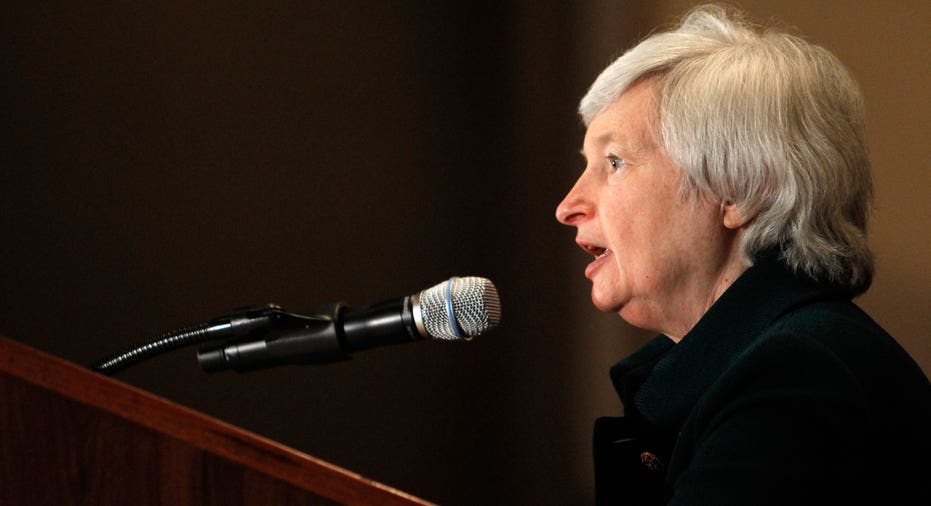Yellen Reiterates Fed’s Dovish Tone, Remains Cautious on Outlook

Investors worried the Federal Reserve would potentially move too quickly on rate hikes following its decision to raise the federal funds rate by a quarter percentage point in December can rest easy.
On Tuesday, Fed Chief Janet Yellen made her first public remarks since the March Federal Open Market Committee decision two weeks ago, and extended the dovish tone as she warned the central bank will “proceed cautiously” as it continues to assess the economic landscape in relation to future rate hikes.
“This caution is especially warranted because, with the federal funds rate so low, the FOMC’s ability to use conventional monetary policy to respond to economic disturbances is asymmetric,” she said.
Yellen explained that should the economy strengthen more than expected, the FOMC could raise rates quicker than anticipated, or if expansion were to stall or inflation remain “stubbornly low,” the committee could also “provide only a modest degree” of additional stimulus measures by cutting rates back to zero.
Phil Orlando, chief equity strategist at Federated Investors, said in his view, April and June rate hikes are off the table given weak personal spending, durable goods and capital goods data.
“If I’m looking at those numbers, knowing the FOMC has a meeting in April, I don’t see how the Fed in good conscience can hike in April,” he said. “Yes, the dual mandate is still in good shape, but the Fed over the last two meetings have brought in financial market volatility and Chinese concerns in terms of their economic role…they’ve seemingly widened their purview and are looking at this mosaic more broadly.”
Yellen reiterated past insistence that the Fed will remain dependent on economic data, and that the forecasts presented by the FOMC are merely that, not a plan set in stone.
She pointed to strengths including the labor market, which has added an average of about 230,000 jobs over the last three months; an unemployment rate that’s edged lower, moderate consumer spending and continued improvement in the housing market.
That said, she explained the FOMC continues to monitor manufacturing and net exports that have been “hard hit” by slow global growth and a strong dollar, as well as low oil prices that have resulted in layoffs in the energy sector and the spillover in related industries.
Further, the Fed chief said risks to the U.S. economy at the start of the year, including heightened concerns about global growth, have been partially offset.
“I anticipate that the overall fallout for the U.S. economy from global market developments since the start of the year will most likely be limited, although this assessment is subject to considerable uncertainty,” she said.
Specifically, Yellen cited a consensus expectation that China’s economy will grow at a slower pace in the coming years, creating uncertainty about how the world’s second-biggest economy can transition from investment to consumption and from exports to domestic sources growth.
The fact that the Fed chief continued to pull China through her remarks, Orlando said, is significant.
“Yellen taught us that this Fed won’t just look at its dual mandate…if we just look at U3 unemployment and core CPI, we’d say those are fine, go ahead and hike. But that’s only part of the picture,” he said.
Dennis DeBusschere, senior managing director at Evercore ISI, said in a note Yellen highlighted “every dovish argument” floating around in the markets, but said that she could be exercising caution short term to increase the odds of a rate hike later this year: A kind of risk-management strategy.
“Otherwise, they risk tightening financial conditions too quickly and sending inflation/economic growth lower,” he explained. “I realize not a single financials/bank investor wants to hear that given continued disappointment around the Fed’s ability to raise rates, but inflation expectations are moving higher, despite lower oil prices, following Yellen’s talk.”
Following her speech and a brief question-and-answer session, U.S. equity markets rallied, as did gold prices, while the yield on the benchmark 10-year U.S. Treasury yield slid alongside the U.S. dollar against a basket of global currencies.



















